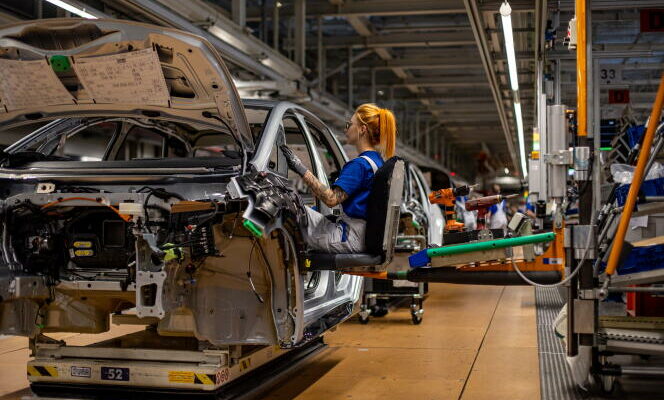“The year 2024 is going to be harder than expected, 2025 certainly too. » Questioned by the daily Handelsblatt, Stefan Hartung, president of the Bosch Group, the world’s largest automotive supplier, did not mince his words, even two days before Christmas. The model equipment manufacturer, until now the strongest in the entire German automobile industry, has resolved to restructuring which has become common in recent months.
Some 1,500 jobs are expected to disappear by 2025 within the Stuttgart group. “The situation is more tense than expected, we are obliged to actexplained Mr. Hartung. We will not be able to avoid cutting positions in the specialties affected by the transition to electricity, even if we hope to continue hiring in the sectors of the future. »
The admission says a lot about its growth prospects, as well as its production constraints. Certainly, job cuts at sites specializing in internal combustion engines were expected. But, in a context of scarcity of qualified labor across the Rhine, where employers favor the requalification of their employees, reducing the workforce reflects an urgent need to reduce costs. This is a warning sign for the central “made in Germany” industry (506 billion euros turnover in 2022, 15.4% of total German exports775,000 employees): there is no longer any doubt that the transition to electric will be much more painful than anticipated.
Relocation to the East
Continental, the large equipment manufacturer from Hanover, also announced a cost reduction plan at the beginning of November. Within the group over the next few years, 5,500 positions will disappear, including 1,000 in Germany. And its competitor ZF, the third major equipment manufacturer, announced a “strict cost discipline”. He is experimenting with a production model that is giving the IG Metall union a cold sweat: not only will jobs linked to the thermal engine disappear across the Rhine, but those for the electric motor supposed to replace them could instead be created… in Eastern Europe.
In Serbia, a ZF site employing 1,000 employees must thus be swelled to… 6,000 people by 2032. Among small subcontractors specializing in parts for thermal engines, hit more than others by the energy crisis, the effects of inflation and rising wages, the movement of relocation towards the East has been underway for a long time.
You have 65% of this article left to read. The rest is reserved for subscribers.
